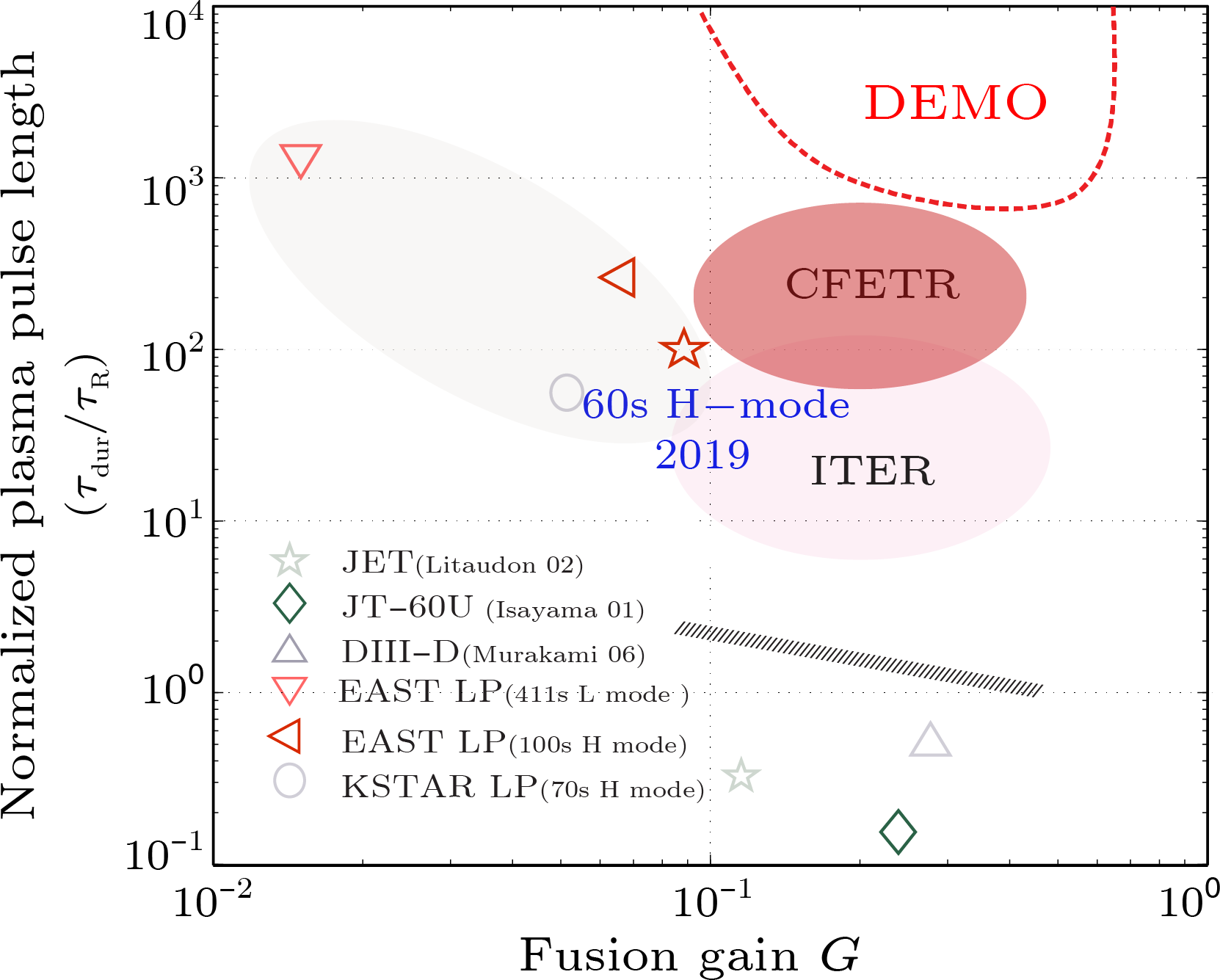| PHYSICS OF GASES, PLASMAS, AND ELECTRIC DISCHARGES |
 |
|

|
|
|
A New Path to Improve High $\beta_{\rm p}$ Plasma Performance on EAST for Steady-State Tokamak Fusion Reactor |
| Baonian Wan** and the EAST team |
Institute of Plasma Physics, Chinese Academy of Sciences, Hefei 230031
|
|
| Cite this article: |
|
Baonian Wan and the EAST team 2020 Chin. Phys. Lett. 37 045202 |
|
|
|
|
Abstract High $\beta_{\rm p}$ scenario is foreseen to be a promising candidate operational mode for steady-state tokamak fusion reactors. Dedicated experiments on EAST and data analysis find that density gradient $\nabla n$ is a control knob to improve energy confinement in high $\beta_{\rm p}$ plasmas at low toroidal rotation as projected for a fusion reactor. Different from previously known turbulent stabilization mechanisms such as ${\boldsymbol E} \times {\boldsymbol B}$ shear and Shafranov shift, high density gradient can enhance the Shafranov shift stabilizing effect significantly in high $\beta_{\rm p}$ regime, giving that a higher density gradient is readily accessible in future fusion reactors with lower collisionality. This new finding is of great importance for the next-step fusion development because it may open a new path towards even higher energy confinement in the high $\beta_{\rm p}$ scenario. It has been demonstrated in the recent EAST experiments, i.e., a fully non-inductive high $\beta_{\rm p}$ ($\sim $2) H-mode plasma ($H_{98y2}\ge 1.3$) has been obtained for a duration over 100 current diffusion times, which sets another new world record of long-pulse high-performance tokamak plasma operation with the normalized performance approaching the ITER and CFETR regimes.
|
|
Received: 06 March 2020
Published: 25 March 2020

|
|
|
|
|
| Fund: Supported by the National Magnetic Confinement Fusion Science Program of China under Grant No. 2015GB103000. |
|
|
|
|
Viewed |
|
|
|
Full text
|
|
|
|
|
Abstract
|
|
|
|
|